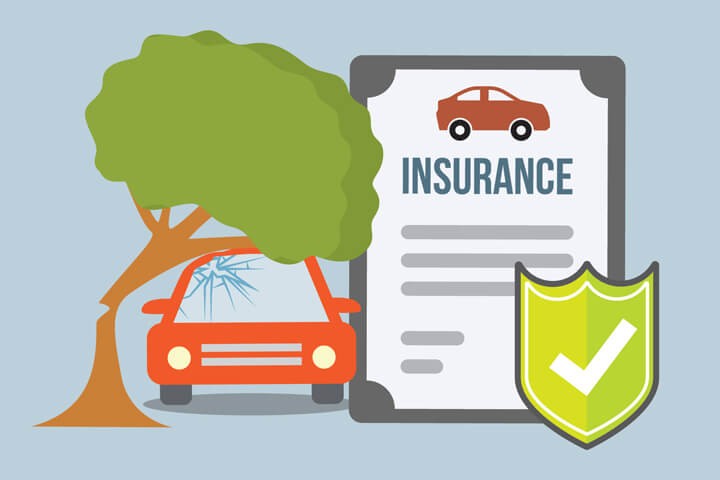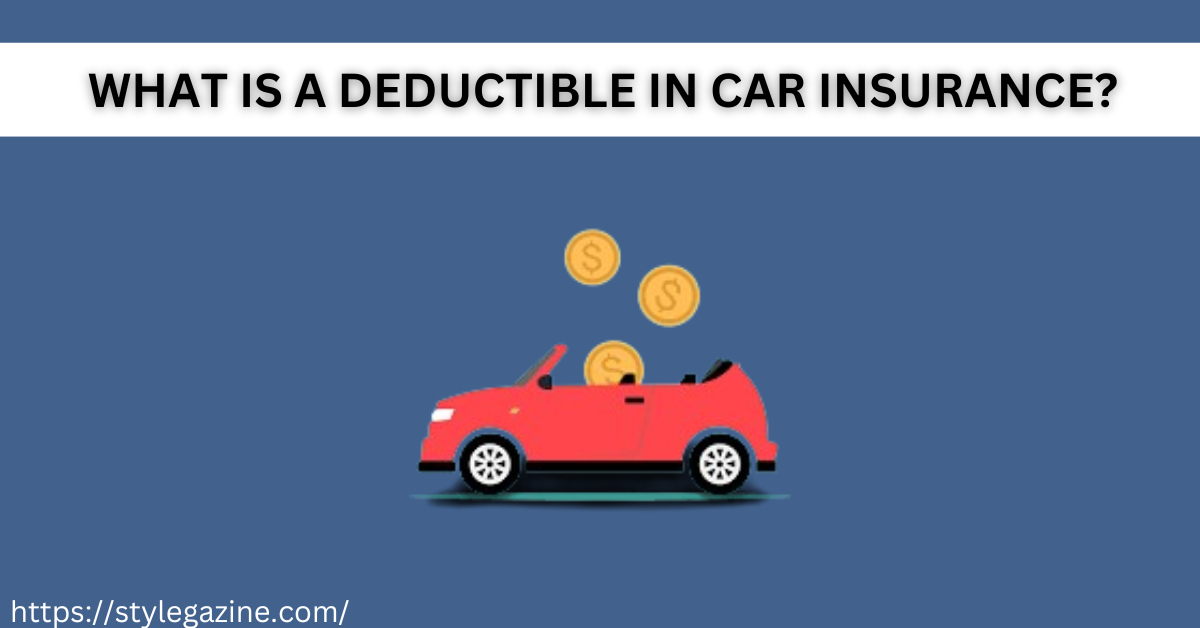Car insurance can be a complex topic, filled with terminology that may seem unfamiliar to many; one such term is “deductible.” Understanding what a deductible is and how it works in the context of car insurance is crucial for every vehicle owner. In this comprehensive guide, we’ll delve into the intricacies of car insurance deductibles, demystifying this essential aspect of your insurance policy.
A deductible is essentially the amount of money a policyholder agrees to pay out of pocket before their insurance kicks in to cover the remaining costs of a claim. It’s a form of cost-sharing between the insured individual and the insurance company, designed to help manage risk and keep premiums affordable.
Deductibles can vary depending on the type of coverage and the insurance provider, with higher deductibles typically resulting in lower monthly premiums and vice versa. For example, if you have a $500 deductible and file a claim for $2,000 in damages, you would be responsible for paying the first $500, while your insurance would cover the remaining $1,500.
It’s important to note that deductibles apply per claim, so if you have multiple claims within a policy period, you may need to pay a separate deductible for each one. Additionally, some insurance policies offer options for different deductible amounts for different types of coverage, such as collision and comprehensive.

Understanding your deductible and how it affects your coverage, and premiums can help you make informed decisions when selecting a car insurance policy. By clearly grasping this concept, you can ensure that you’re adequately protected in the event of an accident while also managing your insurance costs effectively.
What is a Deductible in Car Insurance?
A deductible in car insurance refers to the amount of money you, the policyholder, agree to pay out of pocket before your insurance coverage kicks in to cover the remaining costs associated with a claim. Essentially, it’s your share of the repair costs in the event of an accident or other covered incident.
For instance, if your deductible is $500 and you have $2,000 worth of damage from a covered accident, you would pay the first $500, and then your insurance would cover the remaining $1,500. Deductibles serve several purposes within insurance policies. First and foremost, they help to keep premiums lower by shifting some of the financial responsibility for claims onto the policyholder.
By agreeing to pay a higher deductible, you may be able to lower your monthly or annual premium payments. Additionally, deductibles discourage policyholders from making small or frivolous claims, as it often doesn’t make financial sense to file a claim for an amount close to or lower than your deductible.
However, it’s important to strike a balance when choosing a deductible amount. While opting for a higher deductible can save you money on premiums, it also means you’ll have to pay more out of pocket if you need to make a claim.

On the other hand, a lower deductible may result in higher premiums but can provide more financial protection if you’re ever in an accident. Ultimately, deciding what deductible to choose depends on your financial situation, risk tolerance, and how much you’re willing and able to pay in case of a claim.
How Do Deductibles Work?
In the event of a car accident causing $3,000 worth of damage to your vehicle, with a $500 deductible, your financial responsibility would entail covering the initial $500 while your insurance provider would address the remaining $2,500.
This deductible is a predetermined amount agreed upon in your insurance policy, indicating the portion of repair costs you are accountable for before your insurance coverage kicks in. While it might seem burdensome to shoulder the deductible, it’s structured to mitigate excessive claims and balance your financial commitment and the insurer’s liability.
Essentially, it ensures you have some skin in the game while offering protection against significant financial loss. However, it’s essential to consider the long-term implications of your deductible choice. Opting for a higher deductible typically results in lower monthly premiums but requires you to bear more upfront costs in the event of a claim.

Conversely, a lower deductible means higher premiums but less financial strain when filing a claim. Ultimately, the decision should align with your risk tolerance, financial capability, and vehicle value. Additionally, understanding the terms of your insurance policy, including any exceptions or limitations, can prevent surprises during the claims process.
By maintaining open communication with your insurance provider and regularly reviewing your coverage, you can ensure that you’re adequately protected without overextending your financial resources. In the unfortunate event of an accident, clearly understanding your deductible and insurance coverage can alleviate some of the stress and uncertainty associated with vehicle damage repairs.
Types of Deductibles:
- Collision Deductible: This applies when your vehicle sustains damage from a collision with another vehicle or object, such as a tree or utility pole. It’s the portion of the repair costs you’re responsible for covering out of pocket before your insurance kicks in to cover the rest. When you file a claim for collision damage, your insurer will subtract the deductible amount from the total cost of repairs or the actual cash value of the vehicle if it’s deemed a total loss.
- Comprehensive Deductible: Insurance coverage extends beyond just collisions to encompass various non-collision incidents that can occur. Instances like theft, where a vehicle is stolen, or vandalism, where it’s deliberately damaged, fall under this umbrella. Coverage also applies to scenarios involving accidental or intentional fire, ensuring the vehicle owner isn’t left with the full financial burden.
Choosing the Right Deductible:
When selecting a car insurance policy, you’ll typically have the option to choose your deductible amount. The key is to strike a balance between your deductible and your premium. A higher deductible usually results in a lower premium, while a lower deductible means higher premiums.

Consider your financial situation and risk tolerance when determining the appropriate deductible for your needs. If you have enough savings to cover a higher deductible in the event of a claim, opting for a higher deductible can help lower your premiums and save you money over time.
Factors to Consider When Choosing a Deductible:
- Budget: Can you comfortably afford to pay your deductible out of pocket in case of a claim?
- Driving Habits: Do you frequently commute in high-traffic areas or drive long distances, increasing your risk of accidents?
- Vehicle Value: Is your vehicle new or high in value? A lower deductible may be more beneficial for expensive vehicles.
- Location: Do you live in an area prone to severe weather or high rates of theft or vandalism?
Impact on Premiums:
As mentioned earlier, your deductible amount directly affects your insurance premiums. Generally, the higher your deductible, the lower your premiums will be, and vice versa. Adjusting your deductible can tailor your policy to suit your budget and coverage needs.
Opting for a higher deductible can save you money on monthly premiums, but it also means you’ll have to pay more out of pocket before your insurance kicks in to cover expenses. Conversely, a lower deductible means higher premiums but less financial strain when making a claim.
It’s crucial to strike a balance that aligns with your financial situation and risk tolerance. Consider factors such as your savings, the likelihood of needing to make a claim, and how much you can comfortably afford to pay upfront in case of an accident or damage. Always review your options carefully and consult with your insurance provider to ensure you make the best decision for your circumstances.

Conclusion:
In summary, understanding car insurance deductibles is essential for every vehicle owner. It’s crucial to comprehend how deductibles work, the different types available, and how they impact your insurance premiums. By choosing the right deductible amount and weighing various factors, you can ensure that you’re adequately protected while managing your insurance costs effectively. Always consult your insurance provider to explore your options and make informed decisions regarding your car insurance policy.
